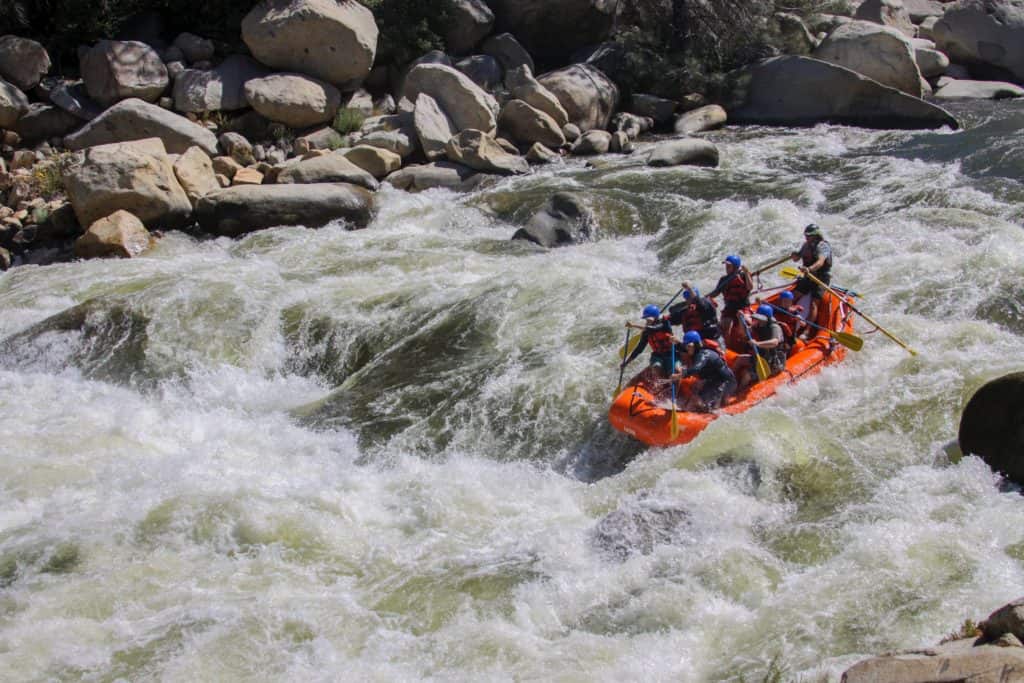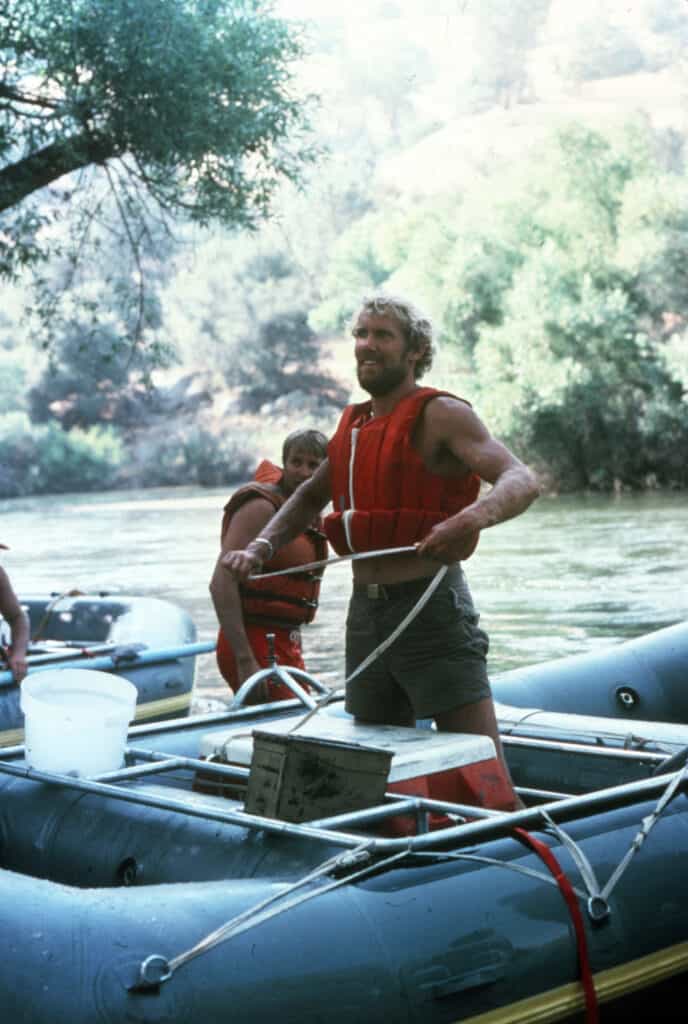40+ Years Of Kern River Rafting History
In 2020, top raft guides have the experience, skill, and technology to successfully tackle every section of the Wild and Scenic Kern River. This is some of the best and most challenging whitewater rafting on the Planet. There was a time in the not too distant past when the Kern was a far more intricate puzzle that took years to fully piece together. Throughout the History of Kern River Rafting, one thing has always stayed the same. The Kern is a river of innovation, progression, passion.

The Early Days of Rafting on the Kern River
In 1975, an engineer from nearby Ridgecrest, CA was the first known person to bring an inflatable raft down the Kern River. Rick Roberts’ early focus was on the section that runs right through town, the “Lickety Split”. Hundreds of thousands of other rafters have enjoyed this fun Class II-III section which likely felt like the cutting edge at the time. His children referred to him as “Big Daddy”, and that name has lived on in one of the prominent Lickety Rapids.
In 1979, after a few years of sparse commercial rafting in low water years, the Forest Service awarded permits to a handful of companies; Chuck Richards, West Water Expeditions, Outdoor Adventures, Whitewater Voyages, and eventually Rick Roberts(Kern River Tours). The timing was perfect, as the following summer was to be the first big water year for the young rafting industry.
A few of the permitted companies were well-established outfitters on other Cali rivers. They brought with them experienced guides, more solid safety measures, and the important skill of rowing. In the 70s and most of the 80s, raft companies around the US were using “bucket boats”. As the raft descended through rapids it would fill up with water, forcing passengers to bail using buckets. When high-water arrived on the Kern, it was not realistic for passengers to both paddle and bail the boat. Companies began using the center mount oar frames that were typical on the Grand Canyon. This not only opened up more sections at higher water, but it provided an important training ground for the guides. Guiding on the Kern transitioned from a newly formed industry to one of the most important, cutting edge guide destinations in the country.

The Kern River is a truly unique blend of technical, big water. On the Grand Canyon, guides can set up for a rapid in calm water, make one move in the rapid with a large margin of error. The Kern has big water power, with a steep gradient, and lots of boulders to contend with. When several Grand Canyon guides showed up to run the Forks of the Kern they were overmatched with the precise navigation and the volume of water that was constantly pushing them offline. This is the exact type of atmosphere where the guides could push themselves and each other to another level. A place to share new ideas, new skills, and new techniques that translated to any river in the world. As the guides of the Kern began to travel, it was clear the Kern had prepared them for some of the great rivers around the world. Rivers like the Zambezi, Bio-Bio, Futaleufú, and many others.
The Kern River provided a space for guide innovation, but it not have been possible without the popularity explosion of rafting in the 80s. Permitting on the Kern had wisely been limited early on by the Forest Service. By comparison, the American River at its peak was seeing upwards of 100,000 rafters each season! 88 companies were able to operate in a single season! California’s highly populated cities, warm, dry weather, and abundant Sierra Nevada Mountain rivers put it at the forefront of this explosion.
Innovations in Rafting Technology
This demand led to more innovations on the Kern and the rafting industry nationwide. Kern River guides began combining paddle assist and center mount oar frames. This logical progression combined the best attributes of a paddle guiding and oar guiding. The added power gave more control to the raft, which enabled guides to push high water limits and sections even further. Raft manufacturers began working on new prototypes called “Self-Bailing Floors”. Inflated ‘mattresses’ that would allow water to drain out of the bottom of the raft. Manufactures did not get this system dialed until the early 90s, but when they did, it drastically changed rafting. Removing the need for bailing was a quantum leap that made rafting more precise, safer, and opened up bigger flows and harder whitewater. On the Kern, guides began moving away from rowing and back to paddle rafting.
Sierra South was founded in 1985 by local Kern guide Tom Moore. Tom’s experience and love for the Kern River allowed him to promote the river beyond just commercial rafting. He was at the forefront of designating the Upper Kern as a Wild and Scenic Section of River in 1987. This crucial designation protects rivers nationwide that have remarkable wild, scenic, and recreational attributes. Hyside Rafts, owned by Dick DeChant, also moved operations to Kernville in 1990. These were valuable additions to the local whitewater industry, whose success was tampered only by drought.
2017 was the season that broke through one of the worst droughts the Kern had experienced. High-water re-awakened the soul of this great whitewater community. This season also popularized a style of rafting that been seen in small doses on the Kern but was more widely utilized on the classic class V California run, Cherry Creek. Stern-mount oar frames are the most powerful and proficient way of getting down the river. The guide steers from the back of the raft with two oars, while paddlers sit in front to provide power. By 2019, another great water year, Stern Mount Oar frames were nearly as common on the Kern as paddle rafts.
The remarkable whitewater on the Kern River, combined with the abundance of participants in California, should continue to bolster the industry. The recognition of the Kern River is still growing in the United States and the world. As guides and kayakers flock to the Kern, the inevitable sharing of ideas will continue to push our profession forward and keep us on the cutting edge of guiding for the next 40+ years of history of Kern River Rafting.

 760-376-3745
760-376-3745
 Help Me Choose a Rafting Trip
Help Me Choose a Rafting Trip